Mother-in-law’s favourite or the bad-boy. With the Turbo Levo and the Turbo Kenevo, Specialized has got two extremely hot eMTBs on offer. Currently, the 180mm travel Kenevo is still in the shadow of its “little” brother, which also won our group test in the last issue. Why so? Can an eMTB have too much travel? And which bike is better?
If it were purely a matter of sales figures and model variety, the Levo would immediately win the company’s internal duel. However, that’s an unfair comparison, as there is currently only one version of the long-travel Kenevo. It’s time to find out which bike offers the better overall package and which is more fun on an adrenalin hunt in demanding terrain.

What’s the difference?
A look at the features shows numerous similarities. But what is the difference between the € 6,299 aluminium Kenevo, and the second most expensive Carbon Levo, which costs € 7,299?
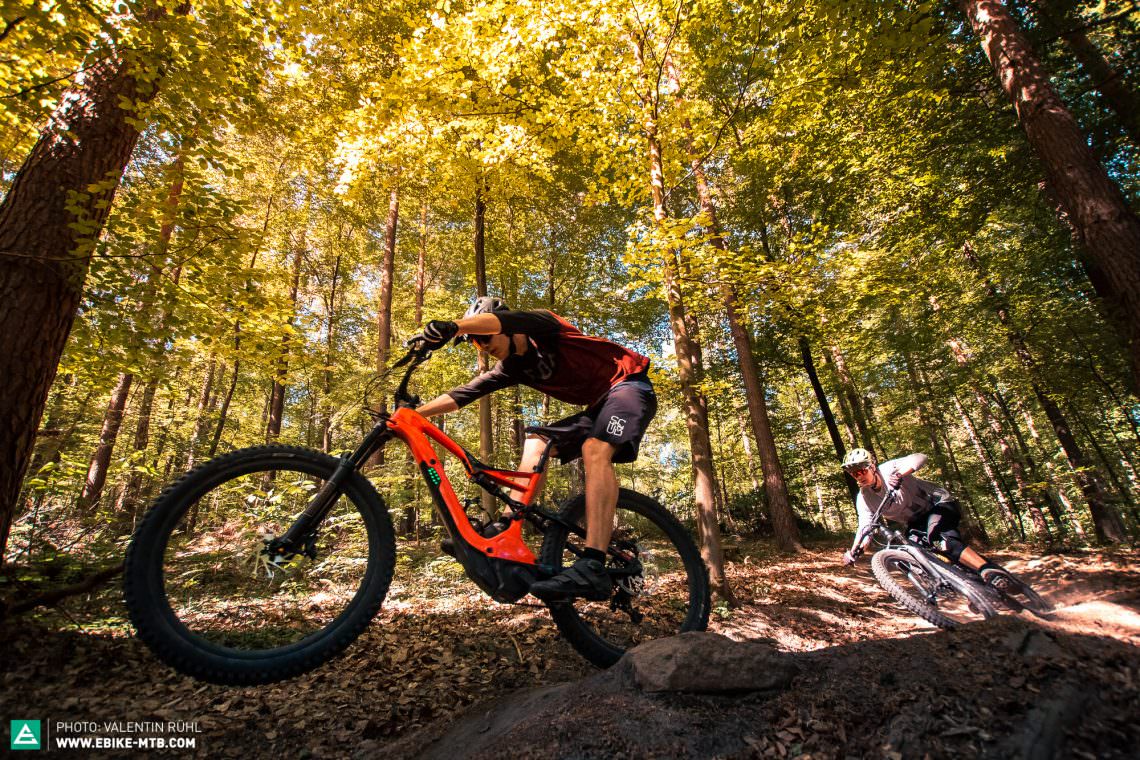
Let’s start with the similarities: with both bikes, Specialized relies on the latest version of the company’s own motor, which was developed in cooperation with Brose. The motor draws its energy from identical batteries beautifully integrated into the down tube, offering a capacity of 504 Wh. The charge status is displayed on the side of the battery. Also, Specialized deliberately dispenses with a standard display on the handlebars. Instead, there is a small remote with which to select the various riding modes – perfect!
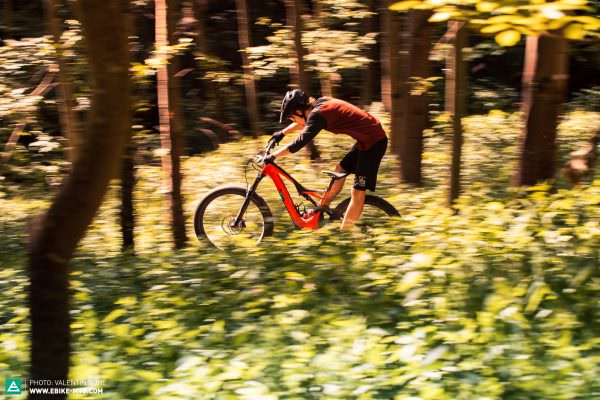

Both bikes roll on wide 27.5″ x 2.8″ Specialized Butcher tyres, mounted tubeless on Roval rims. Carbon on the Levo and aluminium on the Kenevo. Stopping power on both of them is proved by powerful SRAM CODE R brakes with 200 mm rotors front and rear. A magnet on the rear brake rotor exemplifies the smart systems integration featured on all Turbo models. The speed sensor is crash-proof and almost invisibly integrated into the dropout.

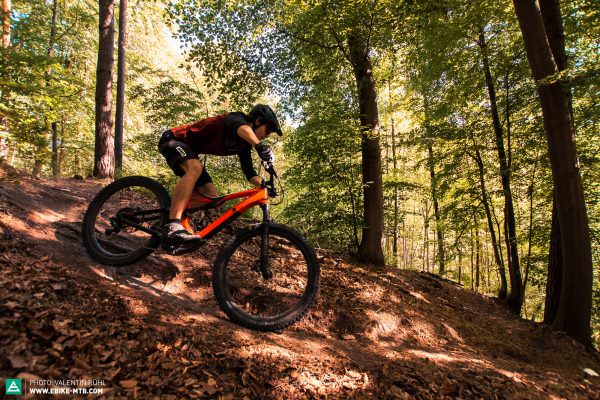
Then what are the differences between these bikes? First and foremost the suspension travel and the weight. The Öhlins TTX 22 M steel coil shock delivers a full 180 mm of travel at the rear of the aluminium Kenevo. Paired with a 180 RockShox Lyrik RCT3, the potent suspension should offer sufficient reserves for super rough terrain. The Levo is over 2 kg lighter. The carbon fibre front triangle and rims as well as the air suspension contributing to the weight saving. Specialized turns the tables on the Levo’s suspension, using an Öhlins RXF36 fork with 150 mm of travel and a RockShox Monarch RT3 shock, providing 135 mm of travel at the rear. The shock features the Autosag function, which makes it child’s play to determine the correct setup. A unique feature of the Kenevo is the dropper seat post: the Specialized Command Post WU not only lowers the seat but also tilts the back of the saddle downwards. The effective stroke at the rear part of the saddle should be 150 mm. The tip of the saddle, on the other hand, remains higher. You’ll not want to sit on the slanted saddle, which is especially annoying when you’ve got the saddle half lowered on climbs. But the dropper seat post of the Levo also has its weaknesses. With a stroke of only 125 mm, it doesn’t drop the saddle enough either.
Specialized Levo FSR Expert Carbon 6Fattie in Detail

Fork Öhlins RXF36 150 mm
Shock RockShox Monarch RT3 Autosag 135 mm
Motor/Battery Specialized 1.3 / 504 Wh
Drivetrain SRAM X1/X01
Brakes SRAM Code R
Seatpost Specialized Command Post IRcc
Stem Specialized Trail 60 mm
Handlebars Specialized Trail alloy 780 mm
Wheels Roval Traverse Carbon
Tires Specialized Butcher GRID Gripton 27.5″ x 2.8″
Weight 21.86 kg
Price € 7,299
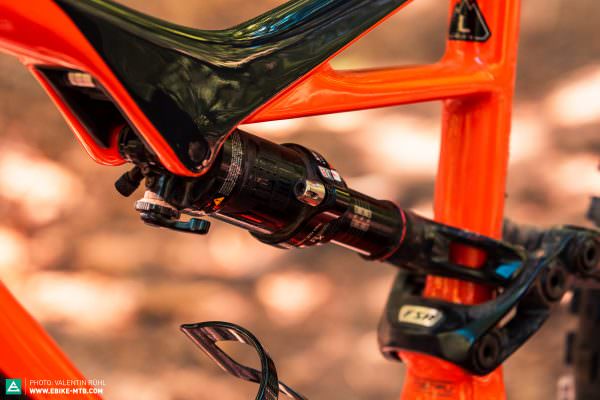
The AutoSag valve allows the shock absorber to be quickly and easily adjusted to body weight
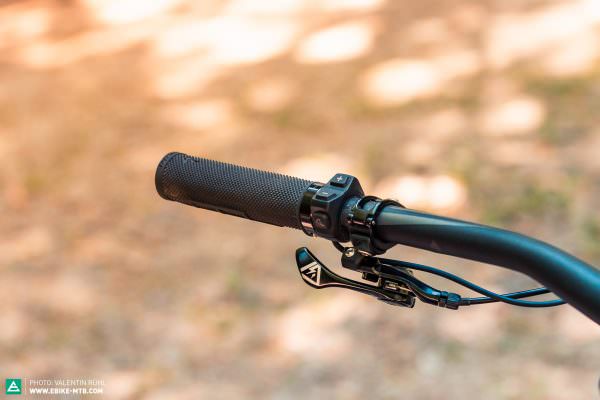
Riding modes can be selected via the remote on the handlebar. The charge status is shown directly on the battery

The cable inlets are beautifully integrated into the carbon frame

The SWAT mini tool is well hidden, but always at hand
Specialized Levo FSR Geometry
| Size | S | M | L | XL |
|---|---|---|---|---|
| Toptube | 554 mm | 581 mm | 611 mm | 644 mm |
| Headtube | 95 mm | 100 mm | 130 mm | 150 mm |
| Headangle | 66,1° | 66,1° | 66,1° | 66,1° |
| Seatangle | 74,2° | 73,9° | 73,6° | 73,3° |
| Chainstays | 459 mm | 459 mm | 459 mm | 459 mm |
| Wheelbase | 1157 mm | 1185 mm | 1215 mm | 1250 mm |
| Reach | 386 mm | 411 mm | 430 mm | 456 mm |
| Stack | 598 mm | 603 mm | 630 mm | 649 mm |
Specialized Kenevo Expert 6Fattie in Detail

Fork RockShox Lyrik RCT3 180 mm
Shock Öhlins TTX 22 M Coil 180 mm
Motor/Battery Specialized 1.3 / 504 Wh
Brakes SRAM CODE R
Drivetrain SRAM GX
Seatpost Command Post WU
Stem Specialized Trail 45 mm
Handlebars Specialized Trail alloy 780 mm
Wheels Roval Traverse alloy
Tires Specialized Butcher GRID Gripton 27.5″ x 2.8″
Weight 23.96 kg
Price € 6,299
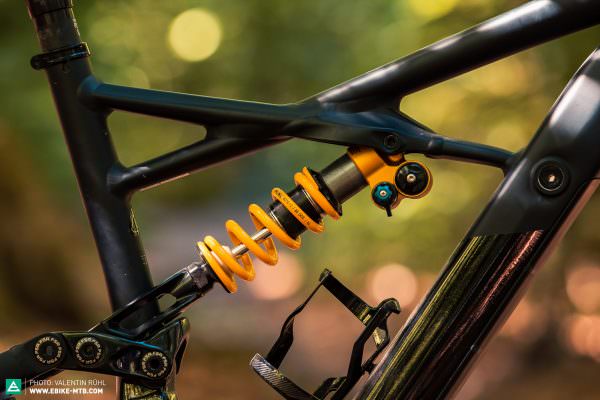
The Öhlins TTX 22 M coil shock is very sensitive
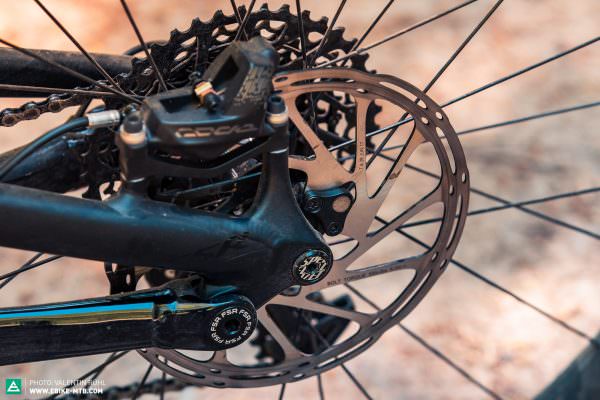
The speed sensor is well protected and integrated into the seat stay. The associated magnet is securely attached to the brake rotor.
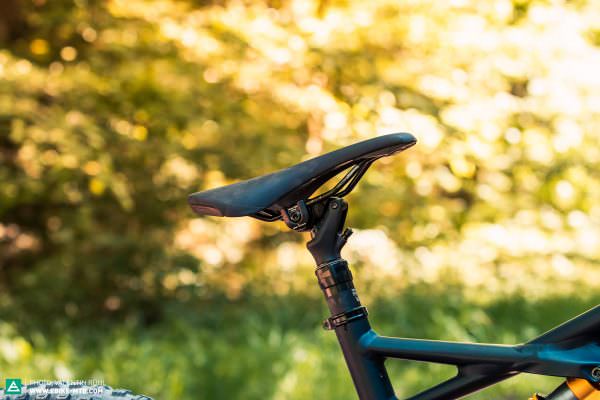
On paper, the WU-Post delivers 150 mm of stroke, but its height limits the freedom of movement too much

The battery can be removed with a 6 mm Allen key. Forgot your battery key at home – not gonna happen!
Specialized Kenevo Geometry
| Size | S | M | L | XL |
|---|---|---|---|---|
| Toptube | 566 mm | 597 mm | 626 mm | 655 mm |
| Headtube | 100 mm | 110 mm | 120 mm | 130 mm |
| Headangle | 65° | 65° | 65° | 65° |
| Seatangle | 75,2° | 74,8° | 74,6° | 74,3° |
| Chainstays | 443 mm | 443mm | 443 mm | 443 mm |
| Wheelbase | 1177 mm | 1205 mm | 1233 mm | 1261 mm |
| Reach | 407 mm | 431 mm | 455 mm | 478 mm |
| Stack | 601 mm | 610 mm | 619 mm | 629 mm |
Which bike is the better climber?
Racing up to the next mountain cabin, the Levo easily drops the Kenevo. The firmer suspension works more efficiently and absorbs less energy than the plush 180 mm rear end of the Kenevo. So you feel like you’re getting up the mountain a little faster and more efficiently with the Levo, which means you can enjoy slightly more range. But we’re not particularly keen on chasing KOM’s when we’re climbing an eMTB. What counts is how much fun we’re having on the trail, downhill and uphill. That’s why we have to dig a little deeper into the matter.
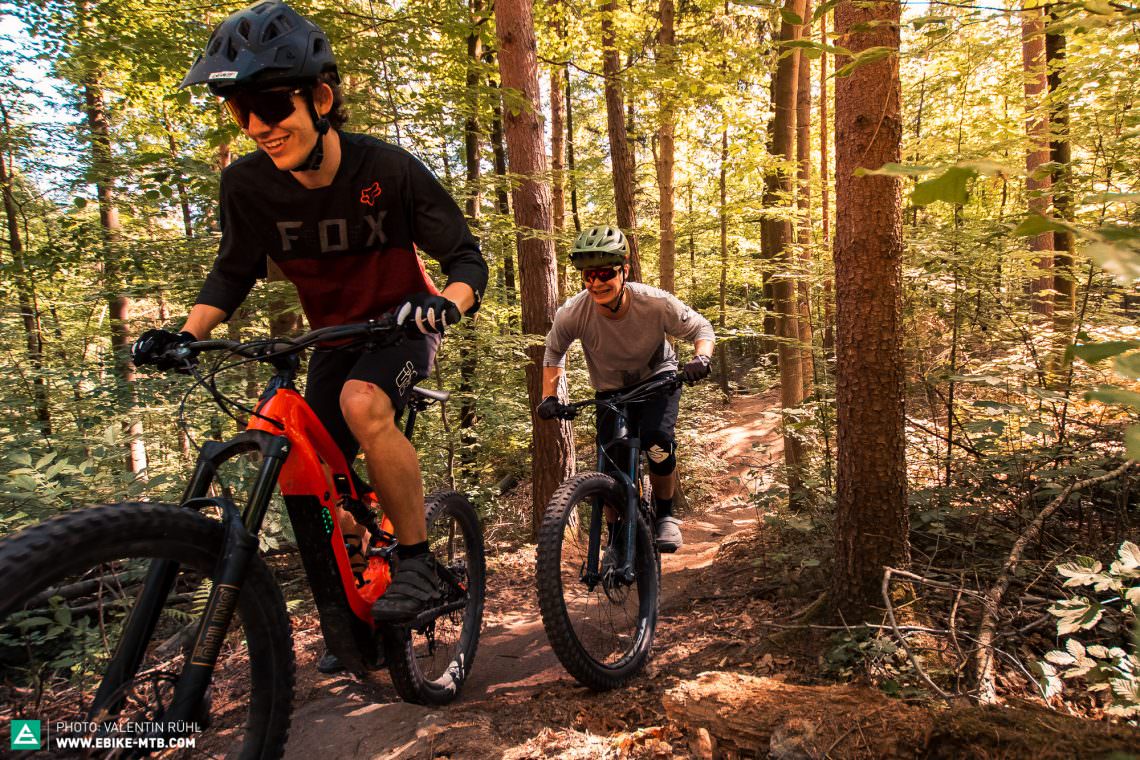
On both bikes, you’re sat slightly stretched in a sporty, central position. Your weight is well balanced, so you can enjoy even the longest of rides without subsequently visiting the chiropractor. Once you turn off of service roads and start pedalling up some trails, the little bit of energy loss on the Kenevo’s plush kinematics is less noticeable. The sensitive coil shock generates a lot of traction when rolling over edges and roots. With the Kenevo, you can better master steep climbs despite the additional travel, not least because of the lower front and the increased traction.
What matters most is having fun!
With both the Kenevo and the Levo, you’ll be spoilt for choice at the summit as to which trail to take back down. Both bikes will playfully take on almost every trail you feel like riding. Thanks in large part to the balanced geometries. The Kenevo offers more room to move forwards and backwards due to the extended front triangle. With the central riding position you’re integrated into the bike so you never get the feeling that you might go over the bars. However, the dropper seat post puts a bit of damper on the fun. Due to the small adjustment range and its overall length, the saddle can’t be lowered enough. On top of that, it makes worrisome noises when it’s dropped and you sit on it.

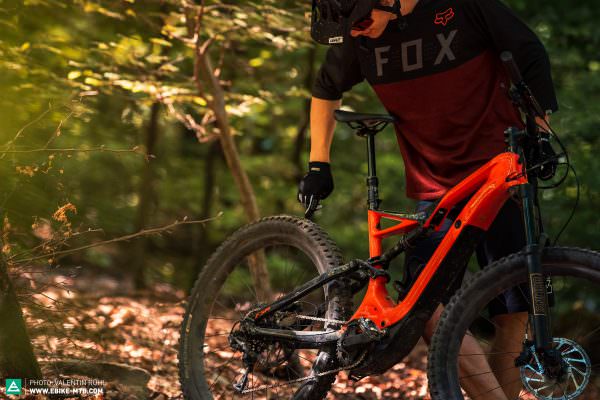
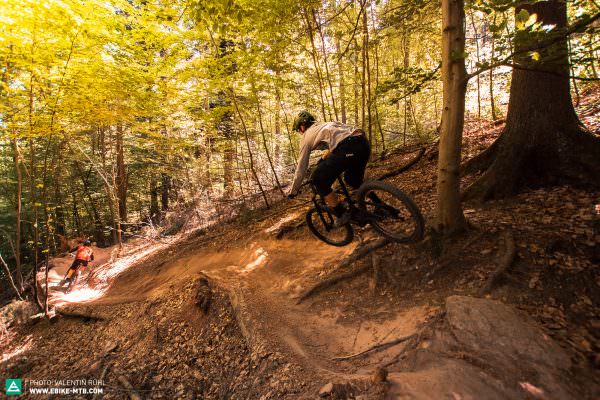
The riding position on the Levo also feels well integrated. However, the front triangle is slightly shorter than that of the Kenevo, so you have to be a little more deliberate to stay on course. On the other hand, together with the longer stem, you can put a lot of weight on the front wheel in corners. The result: plenty of grip on the front wheel as well as swift and precise direction changes. The rear end with its 135 mm of travel is relatively firm. But it fits the character of the Levo very well, despite offering less travel. It doesn’t wallow in corners and provides a lot of support. This combination makes the Levo corner like no other bike. In direct comparison, the Kenevo’s suspension irons out rocks, bumps and roots much more effectively, so that very few blows are passed on to the rider. But it doesn’t keep too much information about the trail beneath you to itself either. It begs you to ride faster. Only once the trail gets fast does the Kenevo show what it is truly capable of. Thanks to its suspension and downhill-oriented geometry, the Kenevo masters high-speed open corners and frighteningly long jumps without flinching. But it manages to score even through slow, technical sections with a lot of grip and sufficient manoeuvrability. The extra two kilos are noticeable, but it’s not unpleasant when riding. On the trail, the low centre of gravity of both bikes ensures excellent handling in corners and stability in rough terrain.
Which is the right bike for me – Levo or Kenevo?
We can say one thing for sure: both bikes shine with balanced geometry, well thought-out features and excellent performance on the trail. The maneuverable Levo continually generates speed with an active riding style, and it handles playfully through corners. If you’re looking for an all-rounder that is efficient uphill and doesn’t crave the wildest lines when you’re going downhill, you’ll be thrilled with the Levo. Despite the extra travel, the Kenevo masters technical climbs better, and it’s in a different league when it comes to descending. Rough, rowdy trails are a lot of fun on the Kenevo, going up and down. It doesn’t have to hide from bike parks and hard alpine trails, and it isn’t out of place on a relaxed after-work ride either.

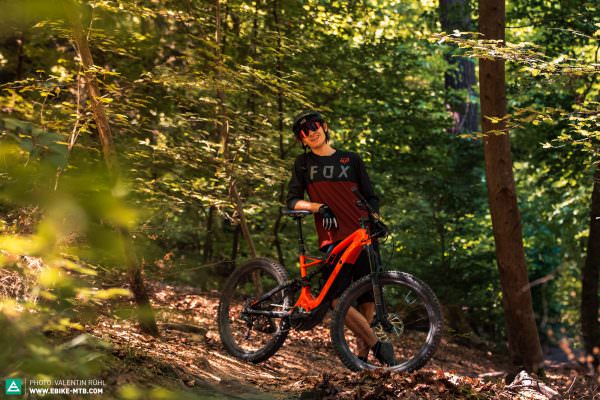
With more reserves, more grip and almost endless stability at high speed, the Kenevo shows the Levo who’s boss as soon as the terrain gets rough. Also, it’s € 1,000 cheaper than its little brother, although it doesn’t come in carbon. More weight means more travel, more reserves, more speed and above all more fun on the trail – uphill and downhill.
More information on specialized.com
Did you enjoy this article? If so, we would be stoked if you decide to support us with a monthly contribution. By becoming a supporter of E-MOUNTAINBIKE, you will help secure a sustainable future for high-quality cycling journalism. Click here to learn more.
Words: Photos: Valentin Rühl









